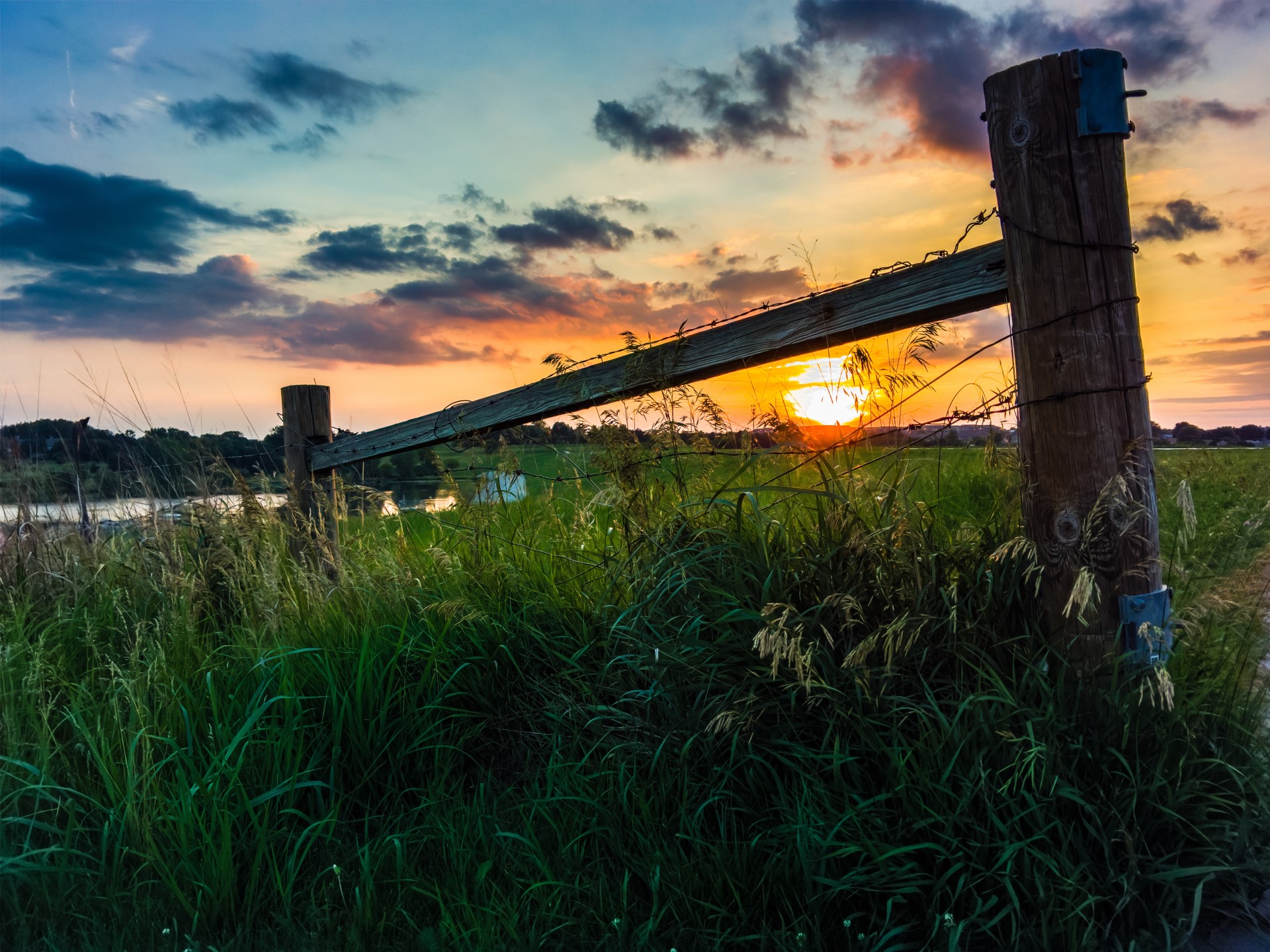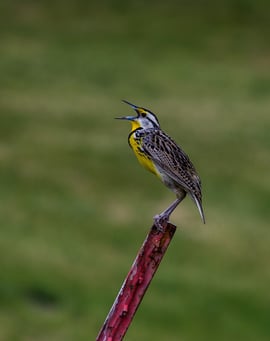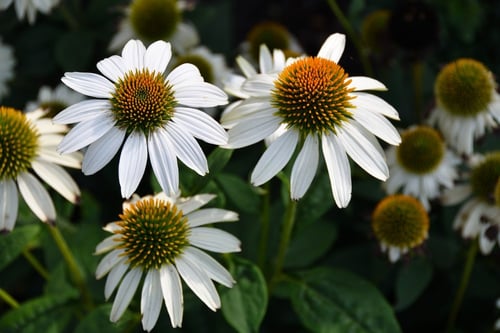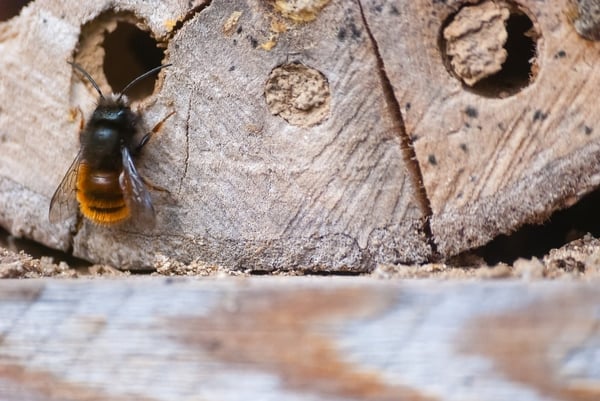
With a 5,000-foot garden on a 1/4-acre lot and a business dedicated to "compassionate" native gardening, Benjamin Vogt is a front-runner IN multiple areas, including sustainable design, native gardening and ecology.
(Download a PDF version of the report to share with friends and colleagues for free)
Native gardening is a thing these days. It feels like you can’t throw a stone without hitting someone’s platinum certification or wildflower patch, and plenty of nurseries cater partially or exclusively to the cause.
While the buzz surrounding native gardening makes it seem like a widespread phenomenon, though, that’s unfortunately not the case. Nor is gardening for pollinators or taking an organic approach. While these are no longer fringe movements, neither are they completely mainstream. Even when people do care about native gardening, they sometimes promote the wrong messages in the name of stewardship.
Which is why it’s so important to have strong voices trying to change that.
Benjamin Vogt of Monarch Gardens is one such voice. In love with prairies and woodlands, promoting plants and animals, redefining the concept of native gardening … he does it all, and more.
Ecogardens was lucky enough to catch up with him recently. Let’s hear what he has to say.
Native Gardening: What Is It and Why Does It Matter?
 Simply put, native gardening is an approach to the landscape that emphasizes growing species that lived here before we did.
Simply put, native gardening is an approach to the landscape that emphasizes growing species that lived here before we did.
In some ways, this challenges our conception of gardening, which is embedded in many minds as a careful exerting of control over the landscape. In the native version, according to Vogt, we let nature take its course in an intentional way. Using plants from the landscape that existed before we arrived, we can nurture the organisms native to our particular locations and strengthen the local ecology.
Despite this very simple definition – that native gardening involves using local plants – common misconceptions exist.
“I hear and read all too often that native plants are drought tolerant,” says Vogt. “No. Properly placed native plants will require very little management, however. It’s about matching plants to the site and to one another, no matter if it’s native or exotic.”
A Properly Managed Garden: Not Much Management at All?
If you do successfully match plants to site, a mature native garden requires almost no management.
Vogt, for instance, maintains his garden once a year. The two-step process is stunningly simple:
“Every March 1st, I mow down the back meadow and trim down the garden beds to about 12 inches with a hedge trimmer,” he says. “In fall I may add a few dozen plants, especially the front beds which are highly visible, in order to tweak what I feel is missing or fill in gaps.”
Even so, it’s never more than 2 days a year of “active management.” That means no watering, fertilizer or mulching, and a quick mow job once or twice a month.
So how long does it take to get to this point?
The Road to Maturity: Early Native Garden Care

Even when using seeds or plugs, a native garden typically takes no more than 4 years to establish. (Note that this is different than a prairie, which can take between 10 and 100 years to reach maturity.) Ultimately, timing depends on the weather, regional differences and whether you started from seeds and plugs, or older plants.
During that establishment period, it’s important to remove competing weeds until the native plants can manage them on their own.
“Weeding in the first year is crucial, and we try not to hand pull because disturbing soil just creates more weed germination,” Vogt explains. That means mowing and clipping to remove flower heads that would otherwise sow new weeds.
“If you stay on top the first year, then year two is way more manageable, and year three tends to be pretty minimal. Again, this is dependent on climate and how the garden is planted. We tend to plug flowers and sow a grass (living green mulch), and the grass takes at least a year to out compete weeds.”
The Transition to Native: Fast or Slow?
Many people worry that in order to get a native garden, they’ll have to rip out their existing landscape, but that’s not true. Transitioning to a native space can be as fast or slow as you like, either creating the garden from scratch, or slowly expanding the foundation beds a few feet at a time or adding natives to current beds.
“It all depends on budget, physical ability, and time to devote to management that first year or two,” Vogt says, adding that no step in the right direction is too small: “Every plant makes a difference, every lot makes a difference, every neighborhood makes a difference.”
How does this apply to the small spaces available in an urban environment, you’re wondering? Good news: Quite well, with a few adjustments.
“For small spaces it’s important to do two things,” Vogt says. “One, choose behaved clumping plants, those that don’t spread much by seed or runners, and two, limit the plant palate so it doesn’t look chaotic and messy.”
Container gardening also serves urban spaces well. This approach, however, dictates that you steer clear of plants with deep taproots unless your container is very tall.
“Choosing plants with the right root zones is critical to container gardening,” Vogt says. The same can be said of green roofs, which rely on plants whose roots play nicely with the roof profile, whether extensive or intensive.
Pollination Education: What Should We Know About Native Bees?
 Bees are the talk of the town, but as we’ve discussed before, we have to look beyond the honeybee.
Bees are the talk of the town, but as we’ve discussed before, we have to look beyond the honeybee.
“Let’s focus on native bees, of which we have about 4,000 species,” explains Vogt. Unlike honeybees, a large percentage of native species “evolved to use the pollen of only one family or species of native plant, so they time their life cycles around when that plant blooms.”
The problem is, especially in urban areas – but even in rural settings where lawns are prevalent and essentially act as deserts for bees – these plants are either not present or not in flower at the expected time.
“As climate change forces earlier blooming times, will these critical bees be able to adapt?” Vogt wonders. And if not, what will the consequences be? “When we lose specialist native bee species like this, it influences how effective other bee species are at pollinating.”
So what can we do? Several things:
First and most obviously, we can plant the native species that bees need to survive. While the step itself might be obvious, however, the types of plants and how to care for them often is not. That’s where specialists come in.
Second, we can stop destroying the native habitats on which bees rely. That means less weed killer in our gardens and in public spaces, and fewer replacements of native species with exotic counterparts.
Last, we can work harder to educate ourselves and people about native bees: “Most bees don’t have stingers,” says Vogt, “and native bees are pretty darn docile when they do have stingers, since almost all have no hive to defend.”
The takeaway: We have little to fear from native bee species, and everything to gain.
Compassion: What Does It Have to Do with Native Gardening?
 Compassion is a word Benjamin Vogt uses a lot. Though not typically applied to gardening by the rest of us, it informs his entire approach to his career, his classes, his books and his own home landscape:
Compassion is a word Benjamin Vogt uses a lot. Though not typically applied to gardening by the rest of us, it informs his entire approach to his career, his classes, his books and his own home landscape:
“In a time of mass extinction and climate change, gardening with native plants is about providing what other marginalized and dwindling species need – the leaves and pollen they evolved with, but that we’ve erased through urban sprawl and intensive agriculture.”
It’s not all about the plants, though, nor even the animals that benefit from them.
Instead, it’s “a highly evolved way of caring for the self by caring for others. So when we protect wildness for wildlife, we are protecting our future (food, clean air, clean water), plus we learn how to nurture one another and see through another’s eyes.”
Perhaps this explains why many people feel an emotional or spiritual connection to plants, as proven by studies proving the positive effect of nature on mental health.
“I feel more connected and in tune with life processes as I witness plant/wildlife interactions,” says Vogt of his own experiences. “When I am in a prairie I feel at home. It is incredible. To see the horizon of grass, to hear the birds, to see the insects, to be lost in that place and faced with my solitude and myself – yes yes yes.”
Most of us, whether we spend lots of time in nature or very little, would agree.
More About Benjamin Vogt: Classes and Books
Benjamin Vogt is the owner of Monarch Gardens LLC, a prairie inspired design firm in Nebraska. He is the author of A New Garden Ethic: Cultivating Defiant Compassion for an Uncertain Future, and speaks around the country on sustainable and ethical urban design for wildlife. Benjamin has a PhD from the University of Nebraska and lives in Lincoln with his wife and infant son.
You can check out his online classes on native gardening, wildlife and pollinator garden design, and more. Also be sure to read the Monarch Gardens blog, which is full of amazing content concerning native species, including plant profiles. It’s your go-to source for compassionate native gardening, so head on over today.

